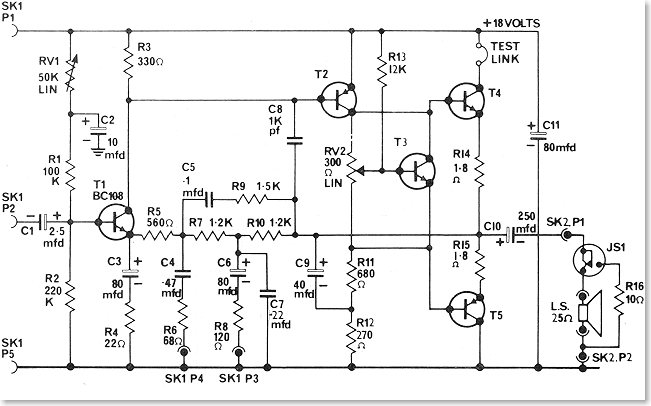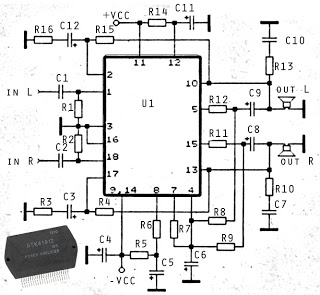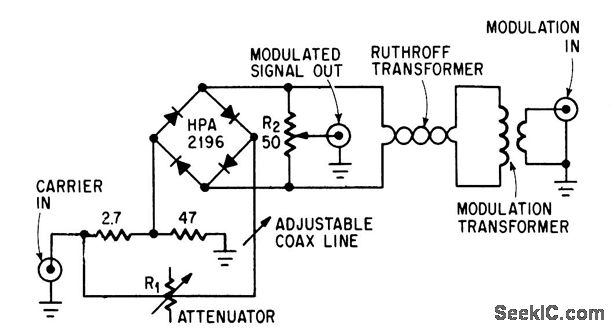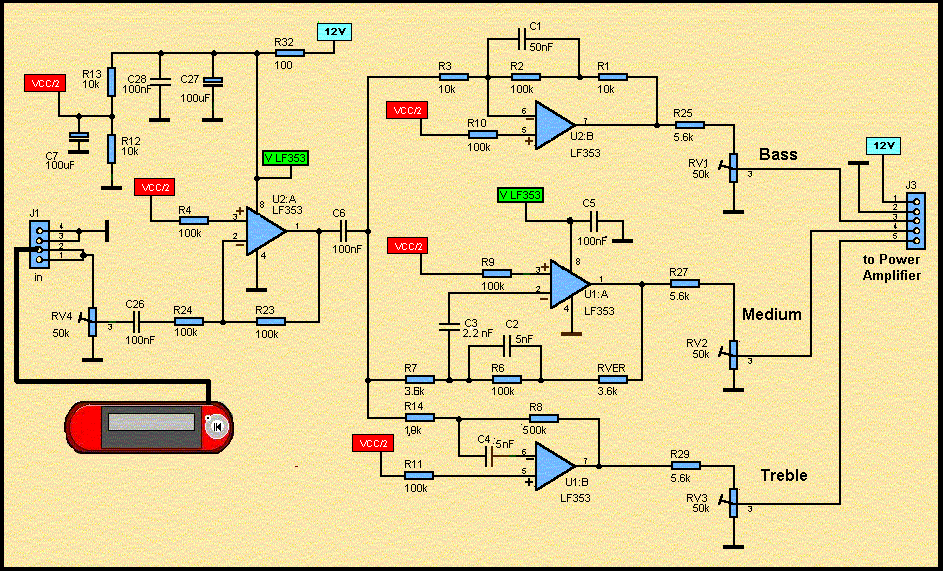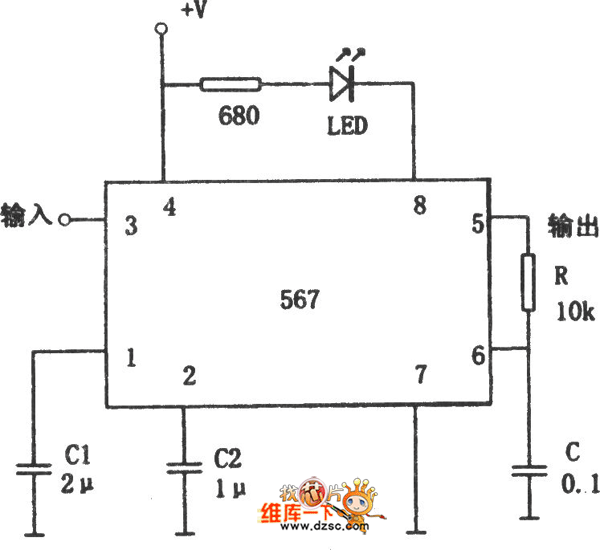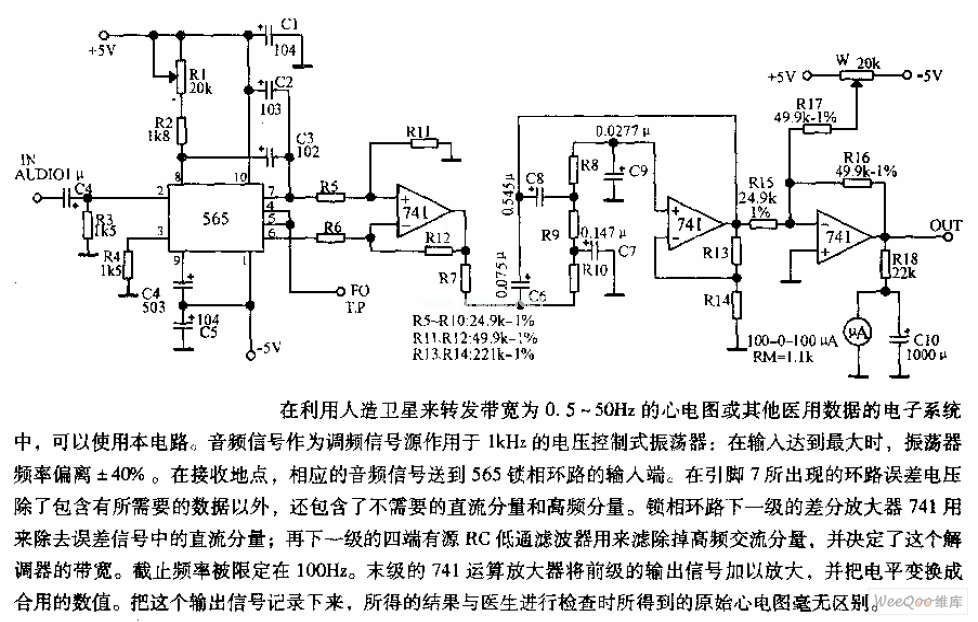
AM Modulator and 50W RF Output Stage
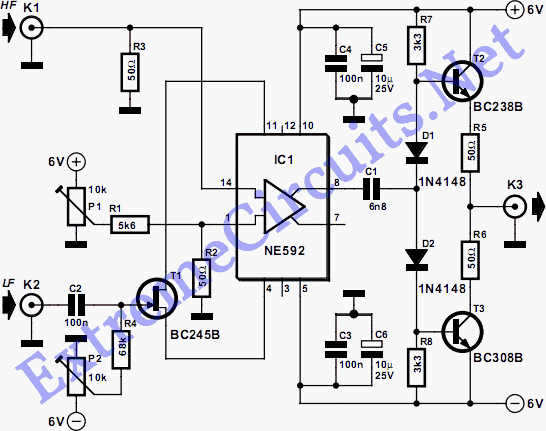
The circuit presented here enables amplitude modulation and offers the significant advantage of replacing the somewhat exotic and complex components typically required.
This circuit is designed to implement amplitude modulation (AM) effectively, which is a technique used to encode information in a carrier wave by varying its amplitude. The primary components of the circuit include an oscillator, a modulator, and a power amplifier.
The oscillator generates a carrier signal at a specific frequency, which serves as the base for the modulation process. This signal is typically generated using a crystal oscillator or a function generator, ensuring stability and precision in the carrier frequency.
The modulator is responsible for combining the information signal (the audio or data signal to be transmitted) with the carrier signal. This is often achieved using a diode or a transistor configuration that allows for the controlled variation of the carrier signal's amplitude in accordance with the information signal's amplitude.
An important aspect of the circuit is the implementation of filters, which are used to remove any unwanted harmonics or spurious signals generated during modulation. Low-pass filters are commonly employed to ensure that only the desired frequency components are transmitted, while higher frequency noise is attenuated.
After modulation, the power amplifier boosts the modulated signal to a suitable level for transmission. This stage is crucial, as it increases the power of the signal to ensure it can travel longer distances without significant degradation.
The circuit's design may also incorporate feedback mechanisms to enhance stability and linearity, ensuring that the modulation process remains accurate across varying signal conditions. Additionally, careful attention must be given to the impedance matching between components to maximize power transfer and minimize signal loss.
Overall, this circuit represents a reliable and efficient solution for amplitude modulation, capable of replacing more complex systems while maintaining high performance in signal transmission.The circuit presented here makes amplitude modulation possible, and it also has the significant advantage that it replaces the somewhat exotic and quite e.. 🔗 External reference
This circuit is designed to implement amplitude modulation (AM) effectively, which is a technique used to encode information in a carrier wave by varying its amplitude. The primary components of the circuit include an oscillator, a modulator, and a power amplifier.
The oscillator generates a carrier signal at a specific frequency, which serves as the base for the modulation process. This signal is typically generated using a crystal oscillator or a function generator, ensuring stability and precision in the carrier frequency.
The modulator is responsible for combining the information signal (the audio or data signal to be transmitted) with the carrier signal. This is often achieved using a diode or a transistor configuration that allows for the controlled variation of the carrier signal's amplitude in accordance with the information signal's amplitude.
An important aspect of the circuit is the implementation of filters, which are used to remove any unwanted harmonics or spurious signals generated during modulation. Low-pass filters are commonly employed to ensure that only the desired frequency components are transmitted, while higher frequency noise is attenuated.
After modulation, the power amplifier boosts the modulated signal to a suitable level for transmission. This stage is crucial, as it increases the power of the signal to ensure it can travel longer distances without significant degradation.
The circuit's design may also incorporate feedback mechanisms to enhance stability and linearity, ensuring that the modulation process remains accurate across varying signal conditions. Additionally, careful attention must be given to the impedance matching between components to maximize power transfer and minimize signal loss.
Overall, this circuit represents a reliable and efficient solution for amplitude modulation, capable of replacing more complex systems while maintaining high performance in signal transmission.The circuit presented here makes amplitude modulation possible, and it also has the significant advantage that it replaces the somewhat exotic and quite e.. 🔗 External reference
